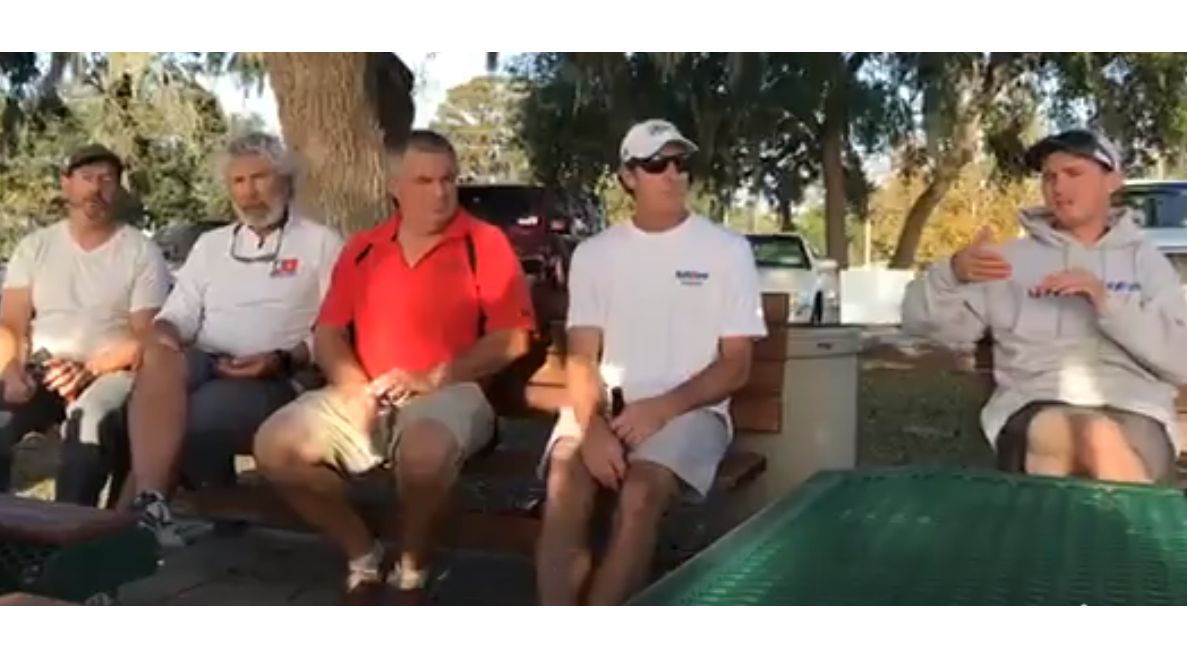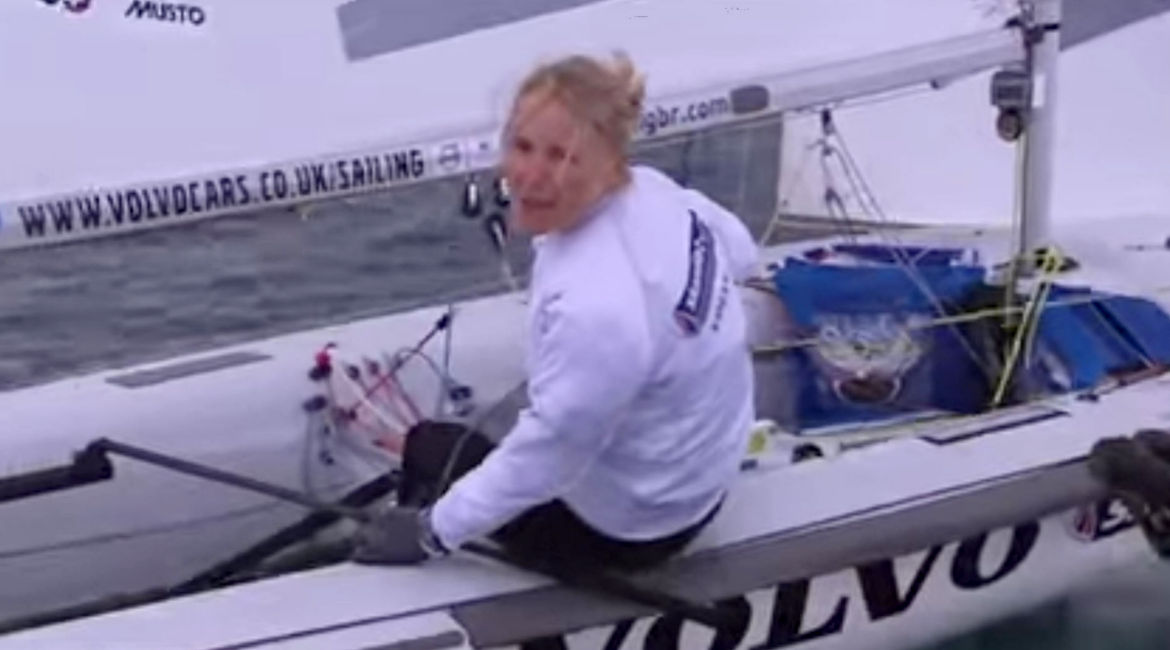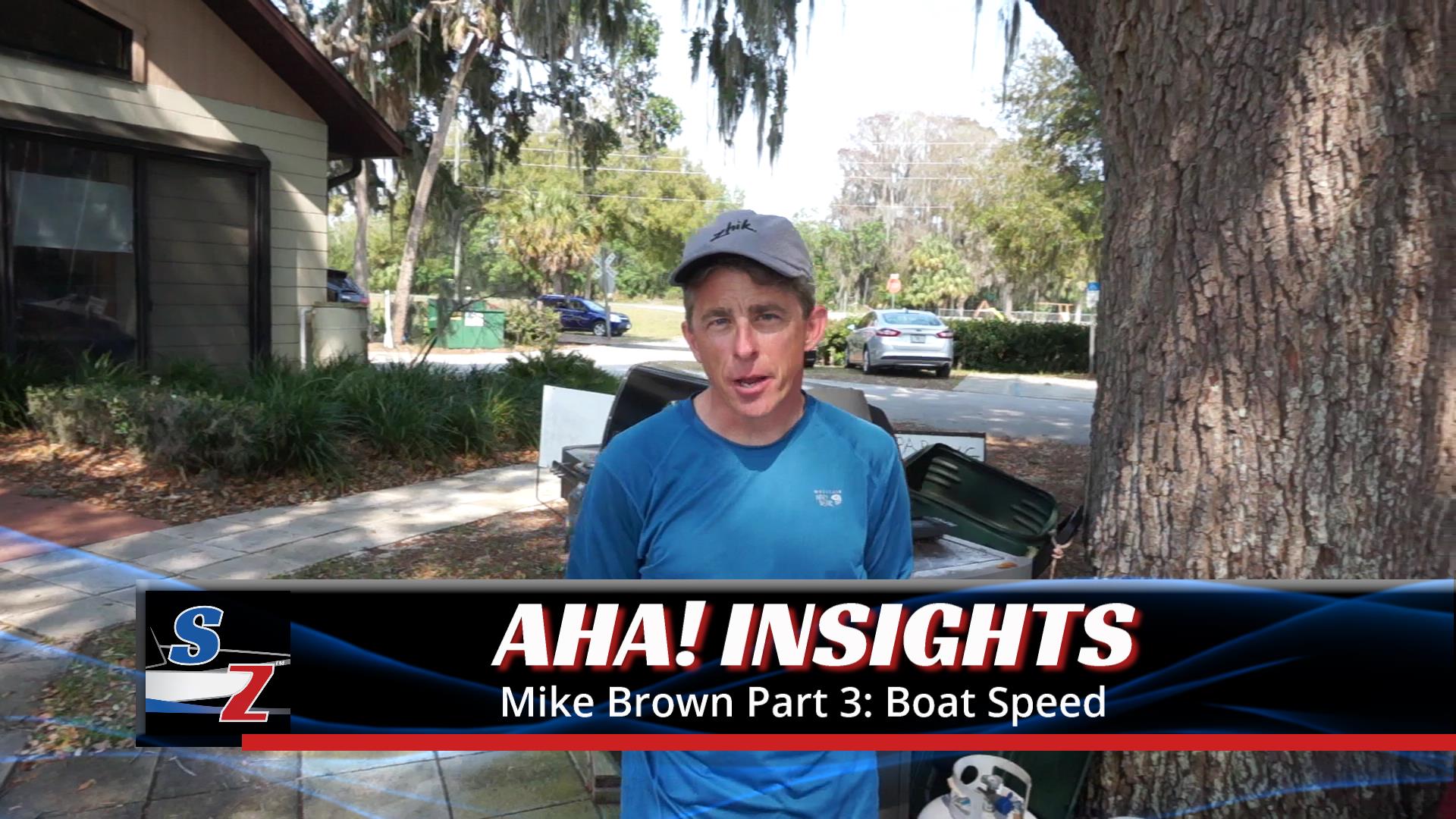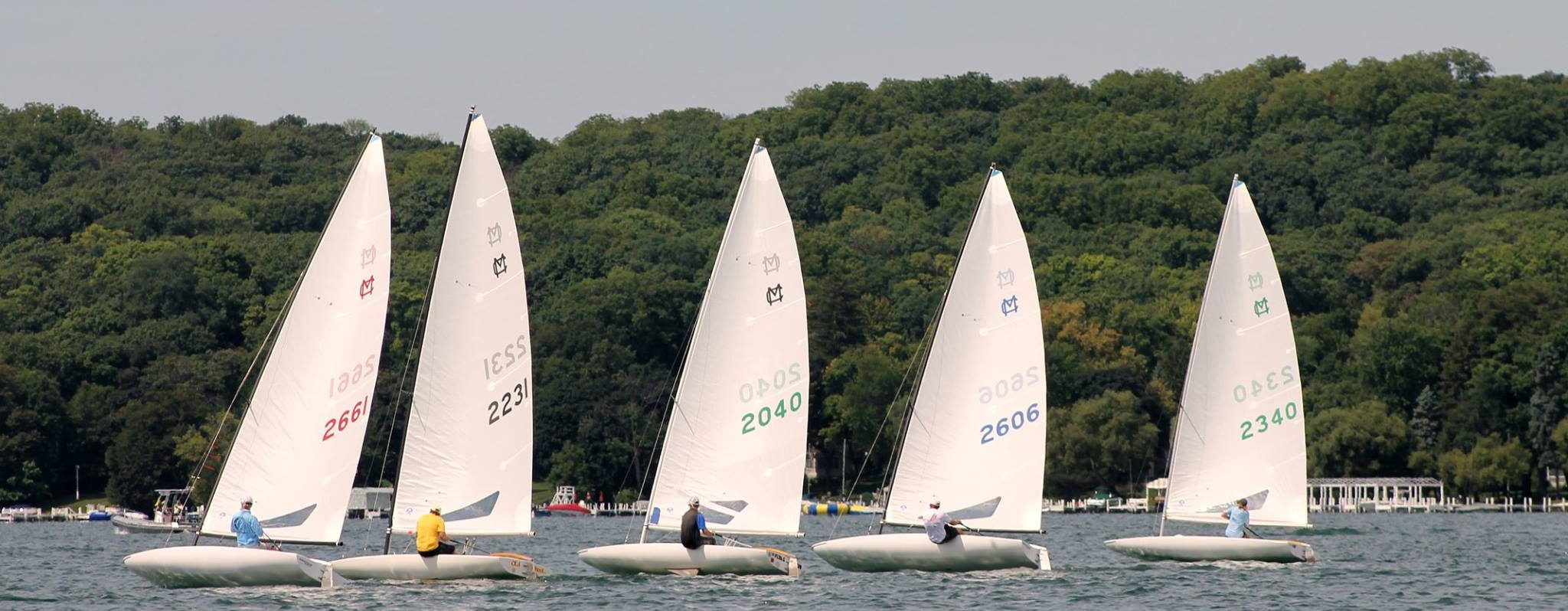Race Course Notes
The MC-Scow class is all about sharing knowledge. This past weekend, at the Southeast Regional regatta at Lake Eustis Sailing Club, the top five sailors at the end of Day 1 shared race course notes in a post-race “press conference.” Day 1 winds were 8-20 mph. Because of the varying conditions, much of the discussion centered around sail controls, with some shorter but revealing comments on constant angle of heel, sailing with crew, and reading the course.
Thanks to Eddie Cox, Rob Seidelmann, Ron Baerwitz, Mike Considine, and Bob Cole. Here’s a summary of their tips, shown with the timing in the Facebook live video (link below). Thanks to Mari Johnson for taking the video.
Sail Controls
Traveler
Vang
- Vang sheeting (-32:50). In big breeze with crew, Eddie pulls hard on the vang and plays the mainsheet aggressively in the puffs to keep the boat on its lines. With the vang tight, easing the main lets the boom out without much rise, keeping the sail flat. This allows a rapid response to puffs. This is commonly known as vang sheeting.
- Vang snugging (-29:55, -16:08, and -14:03). In more moderate breeze, Eddie likes to sheet in the sail to the desired trim and then pull the vang taut for that sheeting angle. In a relative lull, this lets the boom rise slightly and the sail become fuller when he eases the first three inches of mainsheet. In a puff, easing beyond three inches then lets the boom move out without rising further.
Cunningham
At -28:35, Mike explains that when the breeze builds, the location of the maximum draft in the sail moves aft. Tightening the vang also causes the draft to move aft. Most references on sail trim recommend maintaining the point of maximum draft at about 45% of the way aft. To maintain the draft at 45%, tighten the cunningham as the breeze builds and you add vang. See Captain John’s video for further explanation.
Constant Angle of Heel
We hit this subject hard on SailZing, because maintaining the boat powered up with a constant angle of heel is a huge area for improvement for many sailors. Dave Moring was observing the races and pointed out that the top sailors clearly outperform the rest in this area (-15:43). Key points from the discussion:
- Hike (-31:05). Eddie emphasizes the need to always hike hard for speed, and be ready to hike even harder as the puff approaches. Bob (-16:08) points out that you can’t just sail “soft” by letting the sail luff to maintain a constant angle – you have to power up the boat and hike.
- Ease. When the puff hits, be ready to ease or drop traveler (anticipating helps). In a puff, the apparent wind moves aft. If you don’t ease, your sail will likely stall (leeward telltales lift). Easing allows you to match the new wind angle and will accelerate the boat.
- Trim. As soon as the initial force of the puff subsides and the boat accelerates, trim back in for more speed.
- Steering (-12:38). The consensus is that steering up initially in the puff to maintain angle of heel will slow the boat. Eddie discusses how he gains speed first and then decides whether to use that speed to steer up or to keep footing off, based on the tactical and strategic situation.
Related Content:
Upwind Boat Speed – SailZing Aha! Insights
Sailing with Crew
At -24:13, Eddie, Mike, and Ron discuss the advantages of sailing with crew.
- For many sailors, the MC becomes overpowered even at 10 mph. Having a crew allows you to sail fully powered up.
- Crew can assist with the boards, looking for other boats, and even looking around the course.
- In a long regatta, sailing with crew keeps the skipper fresher.
Reading the Course
It was clear that putting yourself in the right place was at least as important as boat speed. Rob is fast, but he also known as the comeback kid for his ability to see what’s happening on the course. At -15:00 he discusses how he uses the other boats to see what’s happening. At -8:00, Eddie reinforces this, pointing out how Rob sailed toward the clouds on the right, got the big pressure and passed 8-10 boats.
Summary
At -8:00, each sailor gave his top key to success for the day:
- Eddie: Be aware of the the sky and what it tells you about where to go.
- Mike: Keep your speed up. Play the vang downwind. (See our post from Mike on playing the vang downwind)
- Rob: Avoid the big bummer, such as a bad start. Concentrate on getting your own decent start and you can easily be in the top group at the first mark.
- Bob: Keep your speed up, and especially during and after a tack.
- Ron: Position yourself to avoid big losses. Stay with the fleet if you are uncertain about what’s happening.
Posted by MC Sailing Association on Saturday, November 11, 2017
Sailors Helping Sailors
Will you share your knowledge with your related Comments below?





